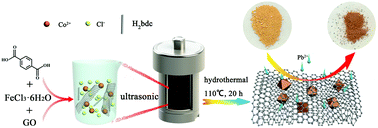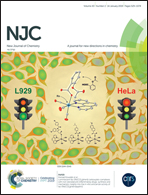Highly efficient removal of Pb2+ by a sandwich structure of metal–organic framework/GO composite with enhanced stability
Abstract
Metal–organic frameworks (MOFs) have been demonstrated as advanced adsorbents with efficient adsorption ability for removal of heavy metal and radioactive ions from wastewater, but the instability of MOFs severely limits their development and application. To address this issue, we propose a facile hydrothermal method to modify Fe-based MOF MIL-101(Fe) with graphene oxide (GO) presenting a typical sandwich structure, which can increase the active site utilization rate. Benefiting from large specific surface area and abundant active sites, the prepared MIL-101(Fe)/GO exhibits high adsorption capacity of 128.6 mg g−1 and fast adsorption equilibrium time (<15 min) for removal of Pb(II) from aqueous solution. The initial concentration effect and adsorption time study directly illustrates the characteristics of the Langmuir isotherm model (R2 = 0.994) and pseudo-second-order model (R2 = 0.997), supplying the basic adsorption mechanism of ion exchange. In particular, the comparative investigation and recycling adsorption of our adsorbent before and after adsorption show outstanding stabilities, implying a huge development potential of the material in adsorbing heavy metals from wastewater.



 Please wait while we load your content...
Please wait while we load your content...